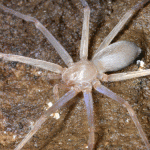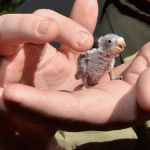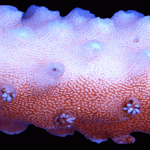
A newborn bee breaks free from her nursery chamber within the colony nest. Image: Christofer Bang
A bee’s sensitivity to sugar reveals her attitude to food.
A few weeks after breaking of the chamber, this young female will leave the hive to search for nectar to feed her siblings and her mother. But when she goes and which pollen she will select depends on her sensitivity to sugar.
In bees, sugar sensitivity reveals their attitude to food, how old they will be when they first start to hunt for nectar and even which pollens they will prefer. According to scientists from Arizona State University in the US, this sensitivity is controlled by two master genes.
When these genes are suppressed, the bees become more sensitive to sweet tastes. However, the bees with the suppressed genes also have very high blood sugar levels, and low levels of insulin, like people who have type 1 diabetes.
This perception of tastes is thought to have evolved as a survival mechanism, indicating poisonous, unpleasant or energy-rich food. In bees, as well as humans, this would allow them to control their healthy food intake or, if it doesn’t function, develop some metabolic diseases.
Source: Eureka Alert






